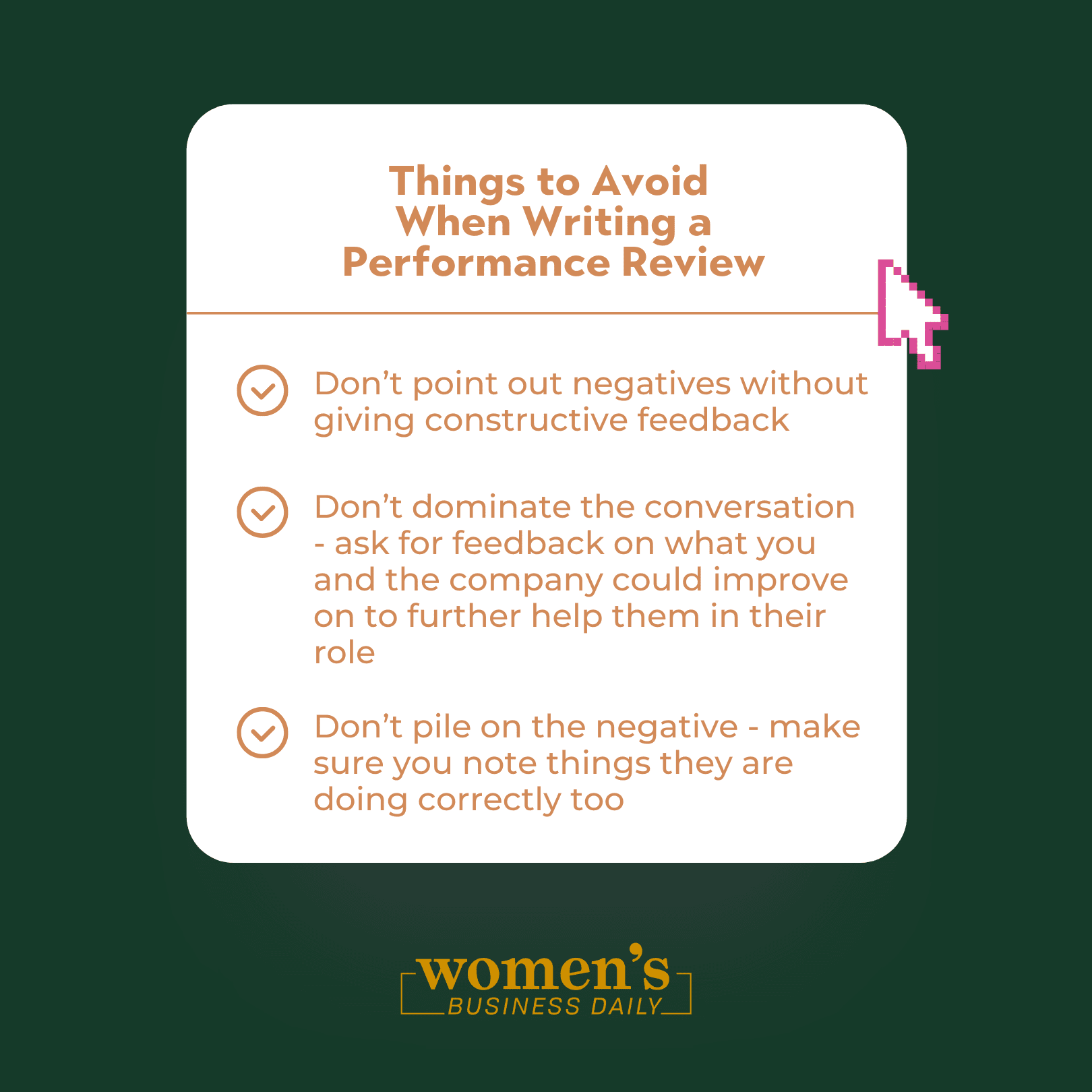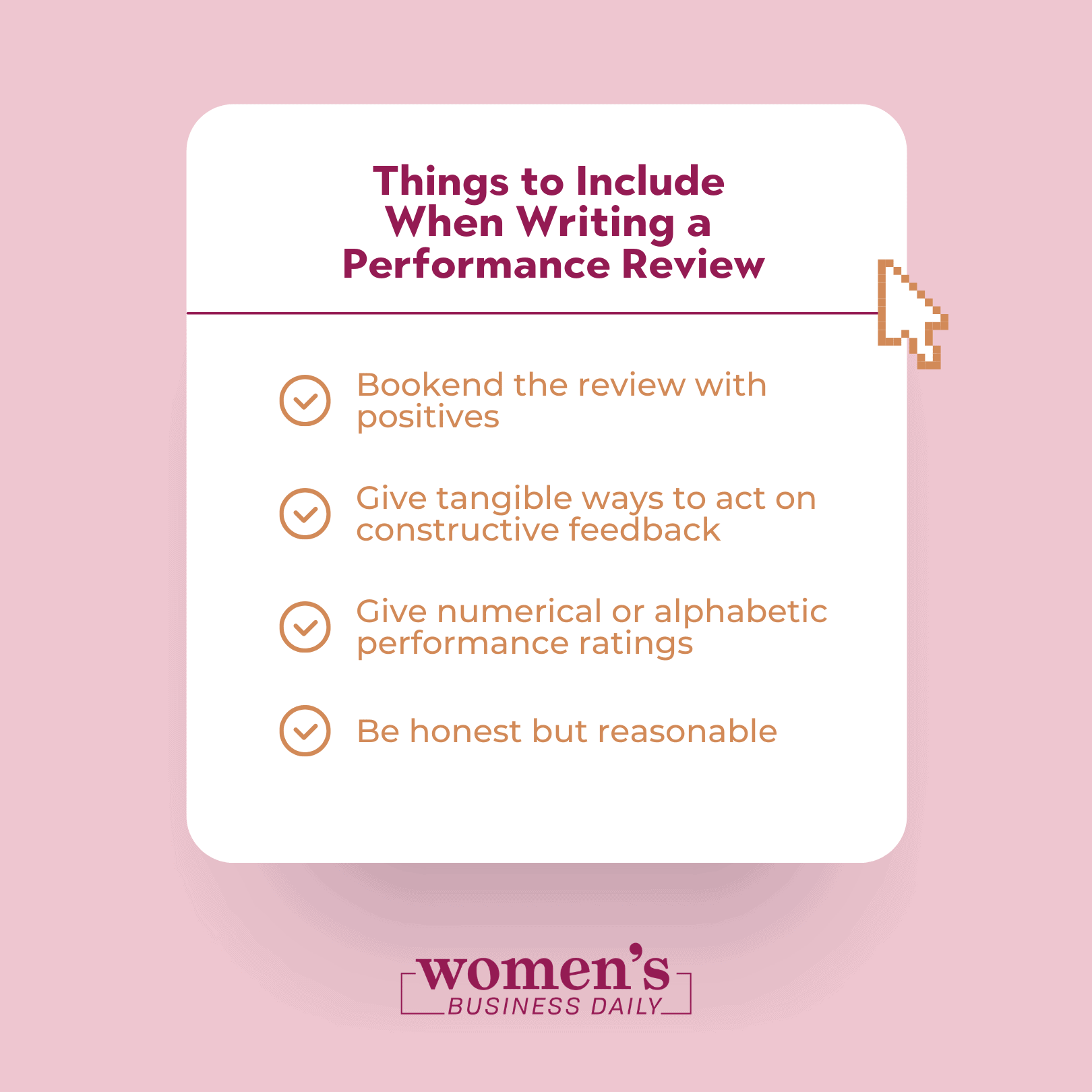Not everyone enjoys the prospect of getting feedback on their work performance. Even for the most stellar employees, the unknown of what their boss will say about them in an annual performance review can be anxiety-inducing. That’s why it’s extremely important to write a respectful, honest, and fair performance review for your employees. No matter what you write, deliver it with compassion.
Writing up performance evaluations can be stressful for a boss as well. How can you tactfully tell someone about the areas of their job description where they missed the mark? How can you clearly describe to someone the exact ways they can improve on their performance?
Here are some tips, best practices, and things to avoid when crafting a performance review that will help your employees move forward and improve with confidence.
The Benefits of a Performance Review
Employee performance reviews should be viewed as a positive experience as they play an important role in the health of the company. It’s a chance for managers and employees to discuss methods the company can adopt in order to more effectively succeed in the future. You get to look at the strengths and weaknesses of the employee, the manager, and the company as a whole.
A successful performance review will be:
- Helpful for the employer: The performance review should be a conversation. The employee should be offered the opportunity to openly express how they think the team and company could work more effectively. You get to hear a fresh perspective on what isn’t working from the employee’s point of view.
- Helpful for the employee: A well-written review gives an employee validation for the good work they are doing and constructive feedback on how they can improve. This will help them grow professionally and give them clear goals to work towards. This will help them improve themselves for the sake of in their own careers and as an asset to the company.
- Helpful for the company: Through these reviews, management and employees get the chance to see how they can all work together to improve as a whole. Management gets to see how people are doing across the board, both on an individual level and also on a corporate level. They can then develop a game plan to address problem areas and capitalize on successes.
Reviews are a thank you for the work done well and a roadmap to improvement for the company as a whole.
The Performance Review Process
In a large enough company, the task of administering the performance appraisals will fall on the human resources (HR) department. The HR leader will hand out the review form ahead of time to both the person giving the review and the person being reviewed. The person getting reviewed will complete a self-assessment, remarking on what they did that year successfully and noting areas where they believe they could improve with guidance and training.
Depending on the size and structure of the business, this will look different in each industry. For a small company with only a handful of employees, the manager or even the owner is a good person to administer reviews. Whoever gives the review should be in a position of upper management and have frequent contact with the employees they are reviewing on a day-to-day basis. Sometimes, team members will review each other in a collaborative peer review process. This approach works well when peers work more closely with each other than someone in a managerial position.
Things to Avoid When Writing a Performance Review
When writing reviews, there are best practices and there are problematic techniques that lead to an unproductive review. Here are some things to avoid when working on the review process.
- Don’t point out negatives without giving constructive feedback. If you tell an employee that they are doing something poorly or incorrectly, you need to tell them the most effective or correct way to do it. If you don’t give them tangible ways to improve and the tools they need to succeed, don’t expect the employee’s performance to be any different the next time they get a review. If you don’t have time to outline the specific process, make sure you set up a follow-up appointment with a point person that can teach them.
- Don’t dominate the conversation. There should be employee engagement during the conversation. While you should steer the conversation when discussing the performance of the employee, be receptive to what they say about the structure of the company and your management style. No one knows the process and structure of a company like someone who navigates it every day, and they’re well-equipped to give feedback on what does and does not work. And if you aren’t willing to listen to their critique, how much stock will they put in the critique you offer them?
- Don’t pile on. Even for the worst-performing employee, you can’t have a successful review if it’s just a half-hour of you telling them everything they’re doing wrong. Intermittent throughout the review, make sure you note things they are doing correctly. If they feel like all you see in them is the negatives, why should they feel motivated to improve in the future? Try to group the things they can work on into specific categories so that you aren’t harping on nit-picky specifics. Give them a broad overview of areas that require attention and offer solutions on how they can improve, rather than outlining every single thing they do wrong.

Things to Include When Writing a Performance Review
Now that you have an idea of things to avoid, here are some best practices to incorporate into your review.
- Bookend the review with positives. Even if you feel the employee has done next to nothing of value, if you want them to listen to and retain your feedback, you need to begin and end with praise to keep their morale level. If you start out the conversation with negatives, the employee might shut down and not listen to a word of the review. If it feels they’re only hearing negative after negative, they won’t be able to handle and digest all the feedback. At the very least, give them something positive to begin the conversation and something nice to end the meeting. If they walk away feeling useless, they won’t have the motivation or ability to improve.
- Give tangible ways to act on constructive feedback. When discussing the employee’s areas for improvement, make sure you explain how exactly they can improve. If you write “employee is bad at writing reports,” tell them exactly how to write a good one. They might not be very good at something because they’ve never been shown the proper way to do it. Negative feedback for negative feedback’s sake doesn’t give the employee any way to grow in the future.
- Give numerical or alphabetic performance ratings. This method may not work for every industry. Some people’s brains don’t process a block of text as well as numbers. If you have a defined grading system, an employee can have a clearer idea of where they stand. If your industry has quantitative standards, these grading systems are easy to generate. If you work in sales, maybe averaging 100 sales in a month is an A. If you work in customer service, you could base barometers of success on how quickly a cashier can scan items. In industries where you have access to quantitative data, perhaps setting up a grading system can help employees get a better idea of how well their performance ranks according to the company’s standards.
- Be honest but reasonable. An employee will not improve when their review consists of only glowing compliments. Giving them honest feedback is a compliment in and of itself; it shows that you believe in their capacity to grow and improve as a professional. If your employee is on the opposite end of the spectrum, they can’t improve if the review is just a half an hour of you berating them. Focus on the positive and negative for all your employees so they can all improve and stay receptive to critique.

Where to Go From Here
The performance review shouldn’t be a single conversation; it’s the beginning of growth for your employees, management, and the company’s structure. It’s important to take the time to set goals and give constructive feedback so the employee has something to reach for and tangible ways to improve their performance.
Ideally, nothing said in the performance appraisal should be a surprise to the employee. Proper communication channels between management and employees should be open year-round, not just once a year. The official review is simply a way to recap the year in a way that gives all parties involved a clear roadmap to moving forward together as a team.
Published in Business, Featured ArticlesAuthor, Artist, Photographer.
Sarah Margaret is an artist who expresses her love for feminism, equality, and justice through a variety of mediums: photography, filmmaking, poetry, illustration, song, acting, and of course, writing.
She owns Still Poetry Photography, a company that showcases her passion for capturing poetic moments in time. Instead of poetry in motion, she captures visual poetry in fractions of a second, making cherished keepsakes of unforgettable moments.
She is the artist behind the Still Poetry Etsy shop, which houses her illustrations and bespoke, handmade items. She is the author of intricacies are just cracks in the wall, a narrative poetry anthology that follows a young woman discovering herself as she emerges from an abusive relationship.





